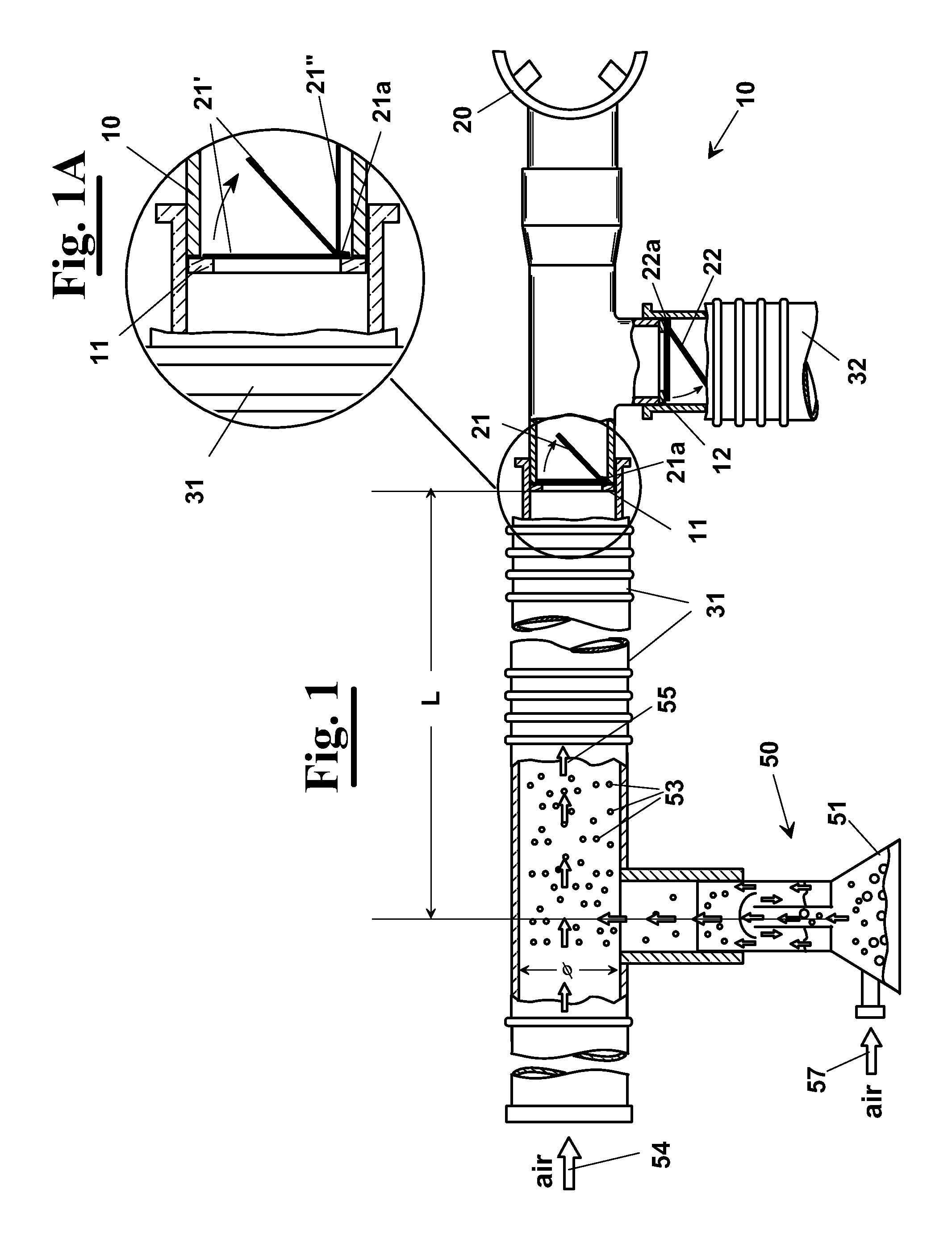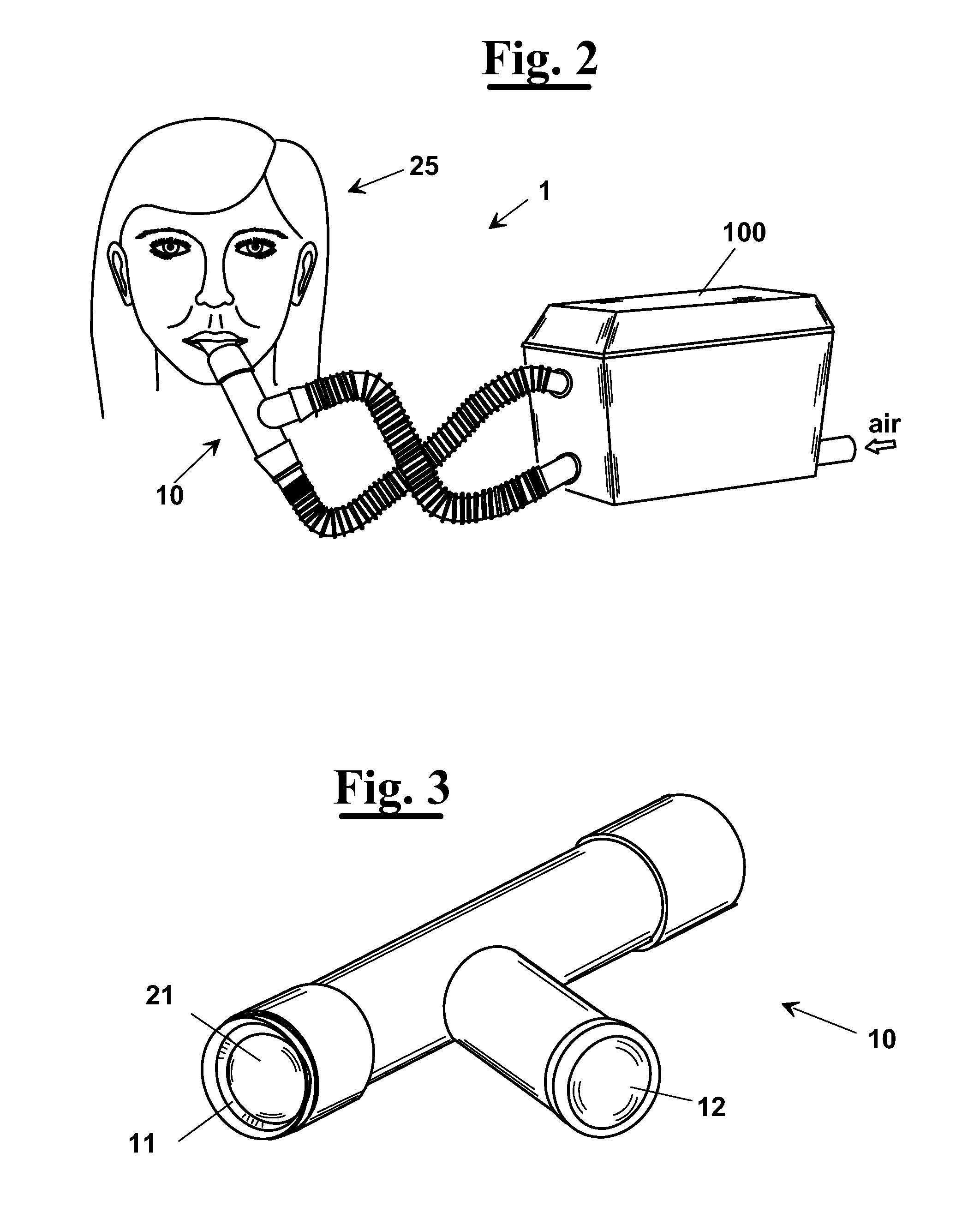Ventilation apparatus for pulmonary scintigraphy
a ventilation apparatus and pulmonary scintigraphy technology, applied in the field of lung ventilatory scintigraphy, can solve the problems of not being able to avoid showing the marker, the patient is subject to a large quantity of dangerous marking particles, and the scintigraphy test cannot be carried out without affecting, so as to improve the quality of marked air
- Summary
- Abstract
- Description
- Claims
- Application Information
AI Technical Summary
Benefits of technology
Problems solved by technology
Method used
Image
Examples
Embodiment Construction
[0070]In FIG. 1 a first embodiment is shown of a ventilation apparatus 1 for pulmonary scintigraphy, according to the present invention.
[0071]It comprises an inhalation collector 10 to which an element of inhalation, for example a mouthpiece 20, a feed duct 31, defining a flow of marked aerosol 55, and an outlet duct 32 for disposal of exhaled flow 56 and any aerosol surplus, are connected. Normally the feeding air is of bi-level type, whereby the air flow rate when breathing out is low, even if always positive.
[0072]In particular, as shown in FIG. 1, the flow of marked aerosol 55 is obtained mixing upstream of collector a current of nano-colloidal particles 53, marked for example with Tc-99m and delivered by a nebulizer 50, with an air flow 54. In particular, nebulizer 50 is a Venturi jet nebulizer adapted to be fed by an air flow 57 set between 15-25 l / min and to generate a flow of marked aerosol 55 including marked aerosolized particles 53, i.e. marked droplets, sized between 0.0...
PUM
 Login to View More
Login to View More Abstract
Description
Claims
Application Information
 Login to View More
Login to View More - R&D
- Intellectual Property
- Life Sciences
- Materials
- Tech Scout
- Unparalleled Data Quality
- Higher Quality Content
- 60% Fewer Hallucinations
Browse by: Latest US Patents, China's latest patents, Technical Efficacy Thesaurus, Application Domain, Technology Topic, Popular Technical Reports.
© 2025 PatSnap. All rights reserved.Legal|Privacy policy|Modern Slavery Act Transparency Statement|Sitemap|About US| Contact US: help@patsnap.com



